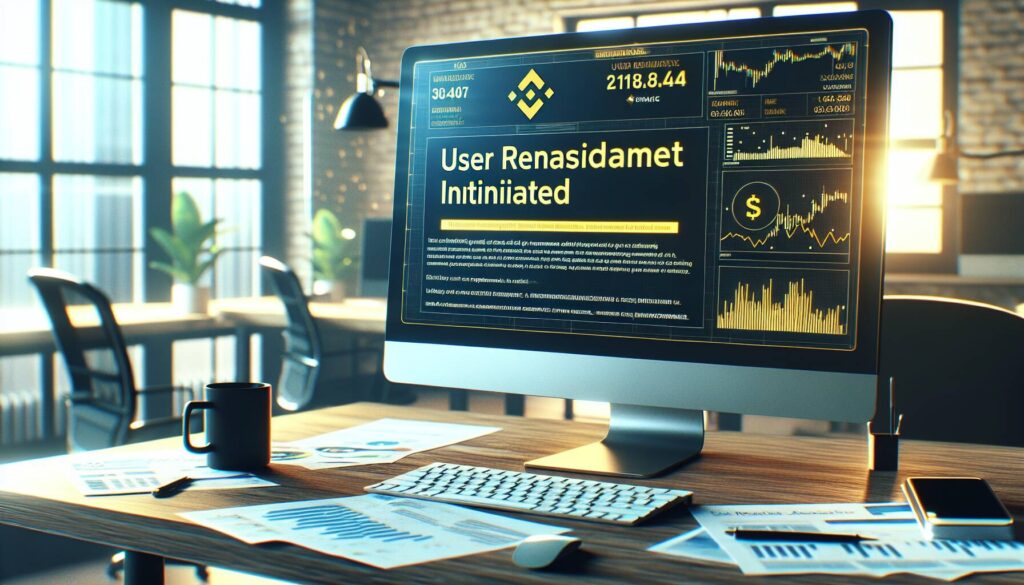
Let’s face it: navigating the crypto market can be thrilling and overwhelming. One day you’re riding a wave of bullish momentum, and the next, you’re questioning every move as prices swing wildly. If you’ve been keeping an eye on Solana (SOL), you may feel like its recent price behavior has been playing tug-of-war with your confidence. But here’s the good news—its evolving technical setup might just be the reassuring signal you’ve been waiting for.
In technical analysis, patterns are more than squiggly lines on a chart; they tell a story of behavior, psychology, and potential. Right now, SOL’s price setup is painting a promising narrative for those patiently watching from the sidelines. After a week of rebounding with a surge of over 7%, SOL has reestablished confidence by resting above a critical support level. This support isn’t just your everyday price floor—it’s the line that connects major peaks seen in March and July. For the chart-savvy traders out there, this level marks the boundary of a descending channel that has kept SOL in a prolonged holding pattern for months.
What makes this moment so special? In early November, SOL did what breakout traders dream of—it confidently burst out above the confines of this channel, signaling a shift in sentiment. Prices leapt to over 0 but then took a natural breather, retracing back to the breakout point. This kind of movement might initially feel unsettling if you’re worried about losing steam, but in the world of technical trading, it’s considered healthy and even strategic. A pullback, or what analysts call a “throwback,” offers reassurance that the breakout wasn’t fleeting but, instead, established a new launchpad for growth.
It’s deeply encouraging to see such calculated behavior in a notoriously volatile market. The way SOL respected its breakout point and rebounded from there underscores the currency’s potential strength. This interplay between resistance-turned-support levels and throwback patterns isn’t just technical jargon—it’s a glimpse into how the collective actions of traders can drive consistent trends. If anything, this moment carries a message: SOL is shaping up to be a textbook example of a breakout evolving into a sustainable rally.
For traders and investors, seeing a setup like this is like spotting clear skies on the path ahead. It lays out boundaries—support below and fresh potential above—allowing for clearer decision-making. Whether you’re someone who has been burned by false breakouts in the past or are eager to catch the next big wave, it’s worth noting that SOL’s technical structure isn’t just about optimism; it’s rooted in well-studied market behaviors.
Of course, as SOL inches forward, skeptics may argue that a return to previous price ranges isn’t out of the question. But for those scanning charts for opportunities, this deliberate re-test and bounce from support can be seen as a foundation of trust. It’s as though SOL is signaling: We’ve tested the waters. Now let’s see where this momentum can carry us next.
When it comes to interpreting market movements, understanding the psychology behind price action can significantly enhance decision-making—and SOL’s recent throwback pattern is a perfect example of this dynamic in action. If you’ve ever felt like the market was playing mind games with you, know that you’re not alone. Price movements are often governed more by human emotion than by strict logic, making it crucial to recognize the psychological underpinnings that steer these patterns.
The bullish throwback pattern SOL has displayed isn’t just a “technical event”; it’s rooted in how traders collectively react to moments of opportunity and risk. Think about it—when SOL finally broke through its descending channel earlier this month, it wasn’t just numbers on a screen. It was a spark that ignited optimism, pulling breakout traders into action. These traders tend to enter positions after a price clears a long-standing barrier, banking on the momentum to carry it higher. But here’s where psychology plays its first card: the rush of excitement over the initial breakout often fades quickly as traders take profits out of fear of losing their gains.
This initial wave of profit-taking causes the price to retrace back to the breakout point, creating what we now see as the “throwback.” Yet instead of signaling weakness, this pullback is often a litmus test of how strong underlying sentiment truly is. The retracement offers clarity—was it a genuine breakout or merely a fleeting move? For SOL, the bounce from its breakout level suggests the former, as buyers lined up to defend the new support zone.
So why does this pattern hold so much weight in trading psychology? The answer lies in how we, as market participants, process regret and second chances. Traders who missed the initial breakout see the throwback as a gift: a “do-over” to jump into an upward trend at a relatively low-risk entry. By entering at the breakout level, they not only find comfort in the proximity of their stop-loss placement but also align their actions with the broader direction of momentum. It’s this convergence of regret-driven second entries and newfound bullish confidence that can amplify the rally, driving prices higher.
Interestingly, the emotional interplay doesn’t stop there. As SOL’s price shows resilience and begins to climb again, a fascinating feedback loop often comes into play. Traders who had taken profits too early might find themselves grappling with FOMO—fear of missing out. This psychological force pulls them back into the market, providing additional buying pressure that can propel the asset even further upward. In essence, the throwback isn’t just a technical pattern; it’s an emotional reset button that allows the market to recalibrate itself for sustained growth.
These behavioral tendencies aren’t unique to SOL—they’re universal in financial markets. The concept of “prospect theory,” which highlights how individuals weigh potential gains and losses differently, provides a useful framework for understanding why price action unfolds the way it does. Traders are risk-averse when locking in gains but risk-seeking when chasing losses or opportunities, creating the ebbs and flows we often observe in throwback patterns.
For SOL, this psychological landscape is particularly compelling because it adds layers of emotional support to an already strong technical setup. The bounce from the breakout level indicates not just technical validity but also collective conviction among traders. It tells a story of renewed trust that, if continued, could act as the bedrock for a sustained upward trajectory.
If you’ve found yourself hesitant about making a move during moments like these, remember: markets are driven by the same emotional rhythms you experience. Understanding them doesn’t just help you read the charts better—it can help you feel more in control of your decisions. By recognizing the value of patterns like the bullish throwback and the psychology that fuels them, you’re not just trading; you’re tapping into the collective mindset of the market itself.
Breakout traders often live for moments like this. The excitement of catching an asset just as it bursts through a longstanding resistance level can be thrilling, offering the possibility of substantial rewards. But it’s also nerve-wracking, filled with questions about whether the move is genuine or a false signal that could lead to losses. For those watching Solana (SOL), there’s a tangible sense of cautious optimism right now—a feeling that the asset might just be presenting a near-perfect breakout opportunity.
What makes SOL so captivating for breakout traders at this moment is the precision of its recent movements. The price didn’t just breach a major descending channel earlier this month—it returned to test the breakout level, paused, and then bounced decisively higher. For breakout traders, this sequence aligns almost perfectly with one of the ideal setups discussed in trading circles: a solid breakout followed by a throwback. It’s like the market’s way of placing a neon sign over the breakout point, signaling, “Look here.”
For those in the breakout game, timing is everything. The initial breakout is often accompanied by a surge in volume as momentum traders pile in. But these moments can be fleeting. Not every trader is able to act immediately, either due to hesitation, missing the alert, or simply not having funds ready to deploy. That’s why throwbacks—where the price revisits the breakout level—are seen as golden second chances. They allow traders to assess the move with greater confidence, knowing that the level has already proven itself as new support.
With SOL, it’s not just the technical setup that’s attracting attention, but also the clarity the throwback brings to risk management strategies. For breakout traders, clarity on where to place their stop loss is as critical as finding the entry. A throwback essentially draws the safety line for them—placing the stop just below the breakout level minimizes risk while still leaving room for the price to fluctuate naturally. In this case, SOL has shown respect for its newly established support, giving traders all the more reason to trust the setup.
There’s also the broader market context to consider. With Solana’s ecosystem continuing to grow and attract attention, traders see not only the technical justification for entering the market but a fundamental backdrop that aligns with it. This confluence of technical and fundamental factors often provides the kind of confirmation breakout traders look for. It’s not just about buying abstract lines on a chart—it’s about aligning technical opportunity with market narrative.
For those feeling a bit hesitant—perhaps burned by previous trades gone wrong—it’s worth acknowledging that no setup is ever entirely without risk. Even the most textbook throwbacks can falter if broader market conditions deteriorate or unexpected events shift momentum. However, the beauty of breakout trading lies in how it structures this risk. By entering close to the breakout level and setting a tight stop loss, traders can limit potential losses while leaving open the opportunity for significant gains if the move continues. It’s a calculated approach, designed to maximize potential returns without overextending into uncertainty.
There’s also a powerful emotional component to consider. Traders who saw SOL’s initial breakout but hesitated to act may now find the throwback offering a sense of relief and resolve. Instead of kicking themselves for missing the first wave, they can interpret this moment as an invitation to join the trend at an advantageous position. This emotional reset is a big part of why throwbacks are so impactful—they give hesitant traders the confidence to act, which can in turn fuel the next leg of the rally.
For now, all eyes are on SOL as it tests the waters of its newfound upward momentum. Breakout traders, in particular, will likely be keeping close tabs on how volume behaves and whether the price can push toward fresh highs. Confidence in the move will grow if the market sees sustained buying pressure, while any sign of a reversal or lack of follow-through could put the breakout thesis to the test. Either way, traders know that these moments, though fleeting, offer some of the clearest and most actionable signals within the chaos of the markets.
If you’re considering stepping into this trade—or even just watching from the sidelines—it’s essential to remain grounded and stick to your plan. Uncertainty and hesitation are part of the process, but some of the most rewarding trades come from simply taking calculated action when the opportunity presents itself. Whether you’re a seasoned breakout trader or someone looking to take their first shot at this strategy, SOL’s current structure might just be one of those textbook cases you study in hindsight, saying, “I’m glad I paid attention.”
In the unpredictable waters of trading, nothing feels as rewarding—or as rare—as a “second chance.” For those who’ve watched a breakout slip through their fingers, the throwback pattern offers a unique opportunity to hop on a trend with reduced risk. It’s almost as if the market itself pauses and turns, saying, “Here’s another shot to get in.” And right now, Solana’s (SOL) technical setup is doing exactly that, making it an enticing prospect for breakout traders who may have missed the initial move.
So, why are throwbacks considered a lower-risk entry in the high-stakes world of trading? It all boils down to the precision they offer when it comes to defining entry points and managing risk. After a breakout—when the price climbs above a well-defined resistance level—many traders hesitate to jump in. It’s a natural reaction to the unknown. Could this move continue, or is it the dreaded “fake breakout” that reverses just as quickly as it surged? For those sitting on the sidelines, the throwback becomes their moment of clarity. Prices returning to retest the breakout level confirm its strength as new support, providing a reassuring signal of stability before the upward trend resumes.
For SOL, its revisit to the breakout zone wasn’t just a random fluke—it was a critical juncture infused with market psychology and timing. Breakout traders who missed out on the first surge have had the chance to assess the retracement, determine their risk tolerance, and make a more confident entry. The beauty here is that the stop-loss level during a throwback is relatively straightforward: it’s placed just below the breakout point. This minimizes potential losses while leaving ample room for the trade to run as the trend unfolds. In trading, this risk-to-reward equation is like striking gold, and SOL’s price action appears to have all the right ingredients for such a setup.
What makes throwbacks particularly exciting is the interplay of emotions they stir up among traders. Picture this: the initial breakout triggers excitement and FOMO, leading to a fast and often volatile surge in price. Almost as quickly, early breakout traders start booking profits—either out of caution, fear, or a desire to lock in gains while they can. This wave of profit-taking creates the pullback we now recognize as the throwback. But then comes a fundamental shift—the traders who missed the initial breakout see the throwback as a rare second chance. These “new” buyers enter the market on the retracement, providing the support needed to validate the breakout level. It’s a fascinating dynamic that fuels bullish momentum and sets the stage for the next leg up.
This brings us back to Solana. Watching SOL defend its breakout point with strong support tells an important story: traders are willing to buy the dip and hold the line. And for those still unsure whether now’s the time to act, the structure of the throwback offers a manageable way to step into the trade. By entering at or near the breakout level and defining a tight stop just below it, traders protect themselves from excessive downside risk while positioning themselves to benefit from the continuation of the bullish move.
Another critical factor with throwbacks stems from their emotional reset mechanism. For traders who’ve been burned by chasing overextended rallies, the pullback feels like a psychologically safer alternative. You’re not buying at a euphoric high; you’re stepping in at a tested and confirmed level of support. The emotional balance this brings to trading can be invaluable. It’s no longer about chasing an opportunity—it’s about participating in one with calculated intent. SOL, with its clean structure and well-defined boundaries, provides just that: a moment to recalibrate and act with conviction.
But let’s not underestimate the ripple effect of trader sentiment on price action. As SOL begins to climb again, something interesting often happens: the traders who sold too early during the initial breakout feel the pangs of regret. This regret turns into FOMO, prompting them to re-enter the market, sometimes at higher prices than they initially sold. The result? An extra wave of buying pressure that fuels the upward trajectory even further. It’s a cyclical, self-reinforcing phenomenon often observed in breakout-driven trends, and SOL’s chart appears to be setting up the perfect conditions for this dynamic to unfold.
For those still observing from the sidelines, it’s worth remembering that throwbacks don’t last forever. While they provide a second shot at a breakout entry, the window of opportunity is usually short-lived. The collective actions of traders stepping in at these pivotal moments can quickly push prices higher, leaving little time to deliberate. But this doesn’t mean rushing in blindly; instead, it’s about recognizing the balance between preparation and action. In the case of SOL, the recipe seems clear: a strong breakout, a respectful throwback, and a brewing sentiment of renewed confidence among buyers.
Ultimately, trading throwback patterns isn’t just about spotting the opportunity—it’s about moving past hesitation and taking action with a defined strategy. SOL’s current setup encapsulates this perfectly. Whether you’re a seasoned trader or someone exploring the intricacies of breakouts for the first time, this pattern invites you in with a promise: calculated patience can lead to outsized rewards. It’s a second chance in every sense of the word—one that might just reshape the trajectory of your trading journey.
The relationship between SOL’s current price behavior and historical patterns observed in Bitcoin (BTC) is drawing increasing interest among seasoned traders. For many, these parallels offer valuable insights, a reminder of market cycles and opportunities that have previously rewarded those with the foresight to act decisively. If you’ve ever wondered whether market history could repeat itself in the world of crypto, SOL’s throwback pattern is echoing past rallies that many longtime BTC followers will recognize.
Let’s revisit Bitcoin’s second-half run in 2023, a period marked by the quintessential dynamics of a throwback-driven rally. After months of consolidation within a descending channel, BTC broke free in a dramatic upward movement, clearing a key resistance level and igniting optimism across the market. Yet, just as enthusiasm peaked, BTC retraced to retest its breakout level, mirroring the behavior we’re seeing now with SOL. At the time, this throwback wasn’t seen as a sign of weakness, but rather as validation of the breakout itself. Smart money capitalized on this moment, setting the stage for BTC’s monumental surge to new highs in the months that followed.
What makes these parallels between BTC and SOL so striking is not just the similarity in price action, but also the psychology driving the patterns. In Bitcoin’s throwback phase, early breakout traders who rushed in quickly took profits, sending prices temporarily lower. This, in turn, invited in a new wave of traders who had missed the initial breakout but were eager to capture the trend on the retest. As a result, the breakout level became a psychologically reinforced support zone, sparking renewed bullish momentum.
Fast forward to today, and SOL appears to be following this familiar script. After its breakout above a critical resistance level, SOL retraced to test the newfound support—a classic throwback. Subsequently, the bounce from this level has affirmed market participants’ confidence, much like BTC’s behavior did several years ago. For those who missed Bitcoin’s 2023 cycle, watching SOL now might feel like déjà vu—a second chance to navigate a similar pattern with a comparable roadmap.
Why does this historical comparison matter? Because it underscores the idea that markets often move in repeatable cycles, driven by common emotional and psychological responses. The fear, regret, and eventual optimism that traders experienced during BTC’s throwback are the same forces likely playing out in SOL’s market today. Understanding these emotions allows traders to spot opportunities in real-time, rather than simply reflecting on them in hindsight.
Another critical similarity lies in how both BTC and SOL’s throwbacks presented low-risk entry points for latecomers. In Bitcoin’s case, placing a stop-loss just below the breakout level provided a simple yet effective way to limit downside exposure while positioning for outsized gains. The same principle applies to SOL now. For traders wary of committing too soon, the recent retest and affirmation of support serve as a reassuring signal to join the trend, armed with a clear plan for risk management.
There’s also a broader takeaway here: momentum breeds momentum. In Bitcoin’s historical throwback-driven surges, the initial recovery from the retest catalyzed a wave of FOMO among traders who had previously sold or hesitated to act. This additional buying pressure helped propel BTC into its next upward leg, reinforcing the trend and drawing in even more participants. Similarly, SOL’s bounce from its breakout point could be the spark that ignites a larger rally. As confidence builds and FOMO sets in among sidelined traders, we may see history repeat itself with a fresh wave of bullish enthusiasm.
It’s worth noting, however, that no historical pattern is a guarantee of future performance. While SOL’s trajectory might mirror BTC’s past in many ways, traders should be prepared for deviations or unexpected market reactions. The key here is to approach the opportunity with balance: respecting the potential while managing the risks. As BTC taught us, even the most promising throwbacks can face short-term turbulence before ultimately proving themselves as pivotal entry points.
For Solana traders, the comparison to BTC offers not just a technical mirror, but also a chance to learn from past market behavior. Bitcoin’s throwback-driven rally demonstrated how aligning technical setups with trader psychology could produce explosive results. SOL might offer a similar opportunity—one that invites both strategy and patience.
If you’ve ever looked at Bitcoin’s past bull runs and thought, “I wish I had been there,” this might be your moment. The patterns playing out in SOL’s chart suggest that history could be rhyming, offering a chance to step into a similar dynamic with the knowledge and lessons of the past. While the future is always uncertain, one thing feels clear: for prepared traders, these moments are more than just historical echoes—they’re windows of opportunity waiting to be seized.

















